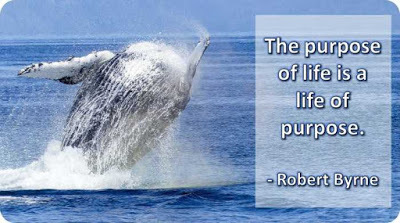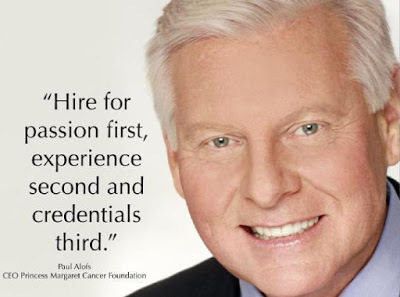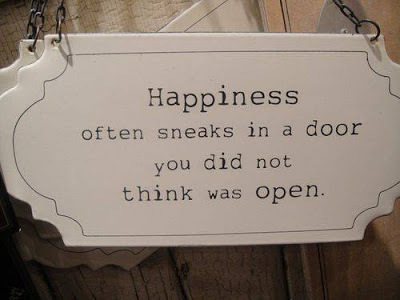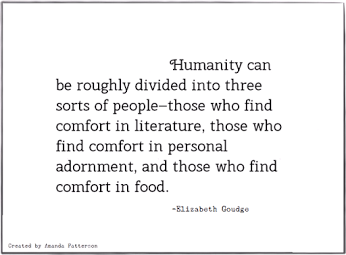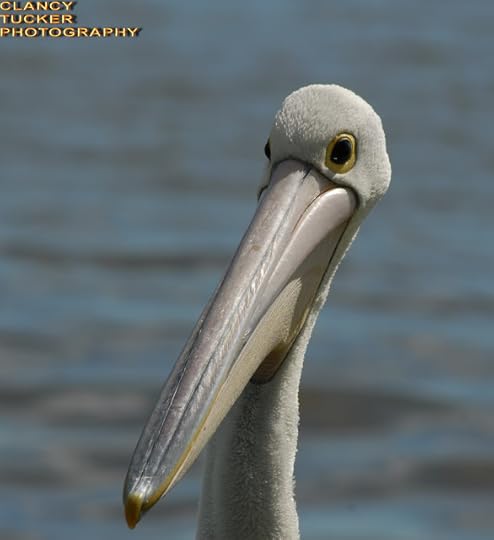Clancy Tucker's Blog, page 201
December 28, 2016
29 December 2016 - A PARTIAL LUNAR ECLIPSE

A PARTIAL LUNAR ECLIPSE
G'day folks,
A lunar eclipse occurs when the Moon passes directly behind the Earth into its umbra (shadow). This can occur only when the sun, Earth and moon are aligned (in "syzygy") exactly, or very closely so, with the Earth in the middle. Hence, a lunar eclipse can occur only the night of a full moon.
A partial lunar eclipse happens when the Earth moves between the Sun and the Moon, but they are not precisely aligned. Only part of the Moon's visible surface moves into the Earth's shadow.

What Causes a Partial Lunar Eclipse?
A partial lunar eclipse occurs when the Earth moves between the Sun and Moon but the 3 celestial bodies do not form a perfectly straight line in space. When that happens, a small part of the Moon's surface is covered by the darkest, central part of the Earth's shadow, called the umbra. The rest of the Moon is covered by the outer part of the Earth's shadow called the penumbra.

Conditions for a Partial Lunar Eclipse For a partial lunar eclipse to occur, 2 celestial events must happen at the same time:The Moon should be a full Moon.The Sun, Earth and Moon must be aligned in almost a straight line. Not Every Full Moon Night Partial lunar eclipses do not happen every full Moon night because of the inclination of the Moon's orbital plane. The Moon's orbital path around the Earth is inclined at an angle of 5° to the Earth's orbital plane (ecliptic) around the Sun. The points where the 2 orbital planes meet are called lunar nodes.

Eclipses can only happen near the lunar nodes. Lunar eclipses occur when a full Moon happens near a lunar node, and solar eclipsestake place when a new Moon occurs near a lunar node.
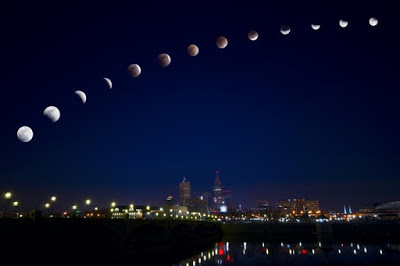
How to See?Partial lunar eclipses can be seen across the night-sideof the Earth. No special equipment is needed to see a partial lunar eclipse. All you need is the exact date and timefor the next eclipse to be seen from where you are, the weather forecast, some warm clothes and a chair to keep you comfortable while you watch the eclipse unfold.
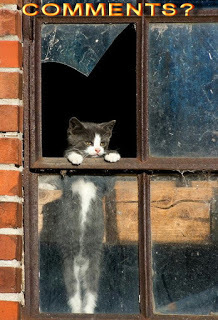
Clancy's comment: There ya go. I knew you were dying to know that.I'm ...


Published on December 28, 2016 12:56
December 27, 2016
28 December 2016 - TOP QUOTES
Published on December 27, 2016 12:32
December 26, 2016
27 December 2016 - DANGER MOUSE

DANGER MOUSE
G'day folks,
Brian Joseph Burton, better known by his stage name Danger Mouse, is an American musician, songwriter and producer.
A child of the ’90s, Burton’s tastes reflect the eclectic utopianism of the decade, with his most important work often deconstructing the already-thin lines between hip hop, trip hop, dub, soul, indie rock, electronica, and psychedelia. The result is almost always a delectable chunk of ear candy.
Burton scored his first DJ gigs while at the University of Georgia. Shy about performing in public, Burton took to wearing a mouse suit while spinning his first parties. It was thus that he adopted the Danger Mouse tag. By the early 2000s, Danger Mouse had relocated to the musically fertile New Cross ward of South London.

In 2004, Danger Mouse created what may be the most famous “mash-up” of all time. Collaging a series of remixes merging songs from Jay-Z’s The Black Album and the Beatles’ The White Album, Danger Mouse began distributing his The Grey Album CD to friends and supporters.

The mash-up rapidly gained cult status as online copies of the record spread like wildfire. Indeed, so successful was this bootleg project that EMI ordered a cease and desist—this in spite of the fact that Ringo, Macca, and Hova all offered their artistic praise for the project.
Thanks to EMI’s lawsuit, even the square entertainment business caught wind of the bootleg, with no less mainstream a publication than Entertainment Weekly naming it 2004’s Album of the Year. With his next project, Danger Mouse would produce a strong contender for Album of the Decade. In 2005, Danger sat at the controls for Demon Days, the sophomore masterpiece by Damon Albarn’s future funk, trip hop collective Gorillaz. A concept record foretelling the apocalypse against the backdrop of the War on Terror, Demon Daysowed its deeply evocative textures, brilliantly foraged samples, and paradoxically radio-friendly tenor to Burton’s ear.

For his next collaboration, Danger Mouse stepped out from behind the controls to form the duo Gnarls Barkley with Dirty South legend CeeLo Green. Gnarls Barkley’s first single, “Crazy,” owns the distinction of being the first to reach #1 on the U.K. charts through online downloads only. Their debut album, St. Elsewhere, earned the pair a Grammy for Best Alternative Record of the year.

It also made Burton one of the most sought-after producers in the business and, consequently, one of the most consistent. Collaborations with MF Doom (The Mouse and the Mask), Norah Jones (Little Broken Hearts), and Beck (Modern Guilt) helped to strengthen Burton’s production résumé. His production work for the Black Keys helped transform the relatively nondescript blues rock duo into one of the biggest touring acts in the world.
In 2009, Esquire magazine named Danger Mouse on its list of “The 75 Most Influential People of the 21st Century.”

Clancy's comment: So much talent, eh?
I'm ...


Published on December 26, 2016 11:28
December 25, 2016
26 December 2016 - ORANGUTANS

ORANGUTANS G'day folks,
Welcome to some facts on one of my favourite species. The orangutans are the two exclusively Asian species of extant great apes. Native to Indonesia and Malaysia, orangutans are currently found in only the rainforests of Borneo and Sumatra.
Orangutans are great apes, as opposed to monkeys, and are closely related to humans, having 97% of DNA in common.

Orangutans are extremely patient and intelligent mammals. They are very observant and inquisitive, and there are many stories of orangutans escaping from zoos after having watched their keepers unlock and lock doors.
Height: males - about 1.5m; females - about 1.2m
Weight:males - 93 to 130 kg; females – 48 to 55 kg
Life Span:60 years or more
Gestation:about 8.5 months
Number of Young at Birth:usually 1, very rarely 2
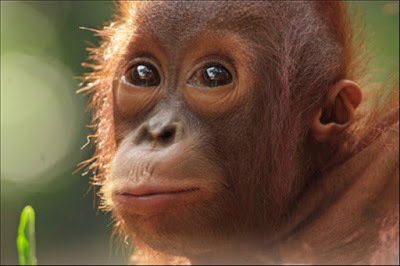
Extinction in the wild is likely in the next 10 years for Sumatran orangutans and soon after for Bornean orangutans. Both the Sumatran species (Pongo abelii) and the Bornean species (Pongo pygmaeus) are classified as Critically Endangered according to the International Union for the Conservation of Nature and Natural Resources (IUCN) Red List of Threatened Species.
The Sumatran and Bornean Orangutans' rainforest habitats are disappearing at an alarming rate due to deforestation and clearing of the land for pulp paper and palm oil plantations, with the remaining forest degraded by drought and forest fires.
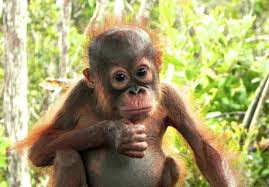
Logging is an obvious problem for orangutans who spend their lives in trees. Fires endanger the orangutans and the smoke confuses them leaving them vulnerable to death from loss of habitat (food). Fires are commonly started to clear the land and undergrowth for farming and palm oil plantations.Palm Oil Plantations are now the leading suppliers for a global market that demands more of the tree's versatile oil for cooking, cosmetics, and biofuel. But palm oil's appeal comes with significant costs. Palm oil plantations often replace tropical forests, killing endangered species, uprooting local communities, and contributing to the release of climate-warming gases. The orangutans that are displaced starve to death, are killed by plantation workers as pests, or die in the fires.Poaching orangutan infants and hunting for meat also threatens the species. Mothers are often killed for their babies, which are then sold on the black market for pets as they are cute. Babies cling to their mothers and suckle their mother’s milk until the age of 6 years. Rescued infants are then rehabilitated by volunteers at orangutan rescue centres. To support and help with the care of these infants, you can Adopt an Orphan for as little as $65 a year. · Over 150 rehabilitated orangutans have been released into the forest area to date via the TOP supported Bukit Tigapuluh Sumatran orangutan Reintroduction Project – the only reintroduction site for the Critically Endangered Sumatran orangutan.

· PLAYFUL FACTS
· In Malay and Indonesian orang means "person" and utan is derived from hutan, which means "forest." Thus, orangutan literally means "person of the forest."
Orangutans' arms stretch out longer than their bodies - over two metres from fingertip to fingertip - and are used to employ a "hookgrip". When on the ground, they walk on all fours, using their palms or their fists.
When male orangutans reach maturity, they develop large cheek pads, which female orangutans apparently find attractive.

When males are fighting, they charge at each other and break branches. If that doesn't scare one of them away, they grapple and bite each other.
For the first 4-6 years of his/her life, an infant orangutan holds tight to his/her mother's body as she moves through the forest in search of fruit.
Like humans, orangutans have opposable thumbs. Their big toes are also opposable.
Orangutans have tremendous strength, which enables them to swing from branch to branch and hang upside-down from branches for long periods of time to retrieve fruit and eat young leaves.

Clancy's comment: I just love 'em. The day these beautiful animals become extinct, will be a day when hopefully, people will realize that they didn't do enough ... And it's too bloody late.
I'm ...


Published on December 25, 2016 12:10
December 24, 2016
25 December 2016 - THE FIVE-DOLLAR CIRCUS

THE FIVE-DOLLAR CIRCUS
G'day folks,
Merry Christmas to you all, and a very special greeting to all those who have supported this blog during the year. Many follow my blog but never leave a comment. That's fine. I was shy once. Anyway, I hope you are all where you want to be this Christmas, and sharing some great moments with those you love and care about. However, if some of you are not, here is one of my short stories. It is one of my favourites, and I'm sure that many of you will resonate with it.
THE FIVE-DOLLAR CIRCUS
I must have been no more than six years-of-age when my father took me to my first circus. Times were tough in those days, money was scarce and jobs even harder to find. Luckily, my father had a reasonable job but he had big commitments as well. At least we owned a car, albeit an old but reliable vehicle. There were five kids in our family, plus Nan, who’d lived with us since Pop died. Living in a rural community was fabulous with so many different things to do: rolling in the hay, riding our pushbike for miles, trying to catch wild birds and fishing in dams for yabbies. However, other than the local movie theatre there wasn’t much in the way of formal entertainment that ever graced our small town. The Agricultural Show was the only social highlight for children. It was the one event where every kid could enter some contest. The first year I entered the best pet contest I won it. That was amazing. I entered Nan’s favourite rooster. Most mothers and grandmothers entered the cooking and preserves competitions but there were things for the men as well. When Pop was alive, he used to win heaps of prizes for his vegies and Dad always entered the woodchop.
Regular dances were held in the Mechanics Hall but we considered them to be grown-ups entertainment anyway. While our parents chatted and danced, all of us ran amok, waiting for food to be served. Supper at those dances was fantastic, especially when Mrs Gamble brought her pancakes or old Mrs Stone made one of her special sponges. It seemed like a long wait for supper but it was worth it when we saw all the food laid out on long trestles.
When news came to hand that a real live circus would be in town every child hoped and prayed their parents could take them. If people couldn’t afford the live performance they could at least walk amongst the animals and soak up the atmosphere. To see wild animals from far away places like Africa and view the lifestyle of itinerant people who lived in caravans and travelled the countryside was enchanting. Our small farming community was fairly isolated so a circus was a big deal in those days. The nearest city was a good hundred miles away, only visited for specialist medical treatment or some other important reason.
Being the eldest child, my father had promised to take me to the upcoming circus as a treat and I vividly recall feeling really special when he pulled me aside and told me. Looking back, I think it was Dad’s way of spending quality time with his eldest son. Nowadays they’d probably call it secret men’s business or some other politically correct term. The hairs rose on the back of my neck every time I saw one of the circus posters pasted to a billboard or nailed to a power pole. It was a strange feeling, like the feeling you get just before your birthday or on Christmas Eve when you go to bed full of expectations but can’t sleep from excitement.

Finally the big day arrived. Dad had planned to attend the afternoon session, wanting to go early so we could stroll around and observe the exotic animals. He’d always loved tigers. Maybe that's why he supported the Tigers Rugby Team. I can remember more than one photograph of tigers in our family home as a child. The biggest one hung above our fireplace in the living room and took pride of place. He used to look at it and make a growling sound that came from deep in his throat.
‘Grrrr,’ he’d say, then wink at us. We don’t know how he managed to do it but we all loved to hear that noise. It sounded so real.
Happily, we strolled to the local recreation oval and spotted others with similar aspirations. Two of my best mates could not afford to attend but they wished me well as we passed their house. They’d already been to see the animals but I deliberately held off so I could savour it with Dad. That wasn’t an easy decision to make but I hung out and waited, convinced it would make our circus visit all that much more enjoyable. I was right. Dad was as excited as I was and, on the way, he told me he’d never been to a live circus performance. Sure, he’d seen circus animals before but he’d never had sufficient funds to enter the Big Top and watch the performances.
We finally arrived and what a sight it was. I’d never seen such a big tent, and we must have spent a good hour just strolling around, admiring animals that sat peacefully chewing their cud. However, the lions paced up and down their cage as if they wanted to get out and eat us alive. My father was enthralled by the large cats but I was scared stiff. I kept glancing at the door of the lion’s cage to ensure the padlock had been snibbed properly. Unlike Dad, I preferred the camels and small ponies. Those camels were amazing beasts, and I kept staring at their humps wondering how they could travel for so long in a desert without water.
Eventually it was time to line up to venture inside and watch trapeze artists, lion tamers, the antics of clowns and other exciting acts. There was quite a crowd. Some folks had come from far and wide; many I’d never seen before. Standing in front of us was a new family who’d just moved into the district. Mum had mentioned them weeks before so I knew they had three children. They’d arrived in town at the commencement of the school holidays but I’d not seen any of their kids nor taken much interest in their arrival. They were renting the run-down old Hamilton home on the edge of town, and not much was known of them. However, I knew that would change in time as locals made it their business to find out all they could about them. Rural townships were always like that. I wasn’t all that curious about the new folks in town. I’d been too busy helping my father with odd jobs, often going to work with him or trying to tease those Swooper Magpies down near our school with my two best mates; not to mention our yabby enterprise at Swenson’s Dam.
Slowly the line edged forward and, as we patiently waited, I looked at the family in front of us. They seemed decent people, but they looked poor. There were two girls and a boy, and their clothes were frayed, probably wearing 'hand-me-downs' which was common in those days. The young boy wore shoes that had certainly seen better days, but at least they were highly polished. Having polished shoes was something Dad always instilled in us.
I recall feeling shy and uncomfortable when one of the girls often glanced at me. I tried to look unaffected by her cute smiles, but I’m sure I must have blushed. She was around my age and sure was pretty with beautiful blonde hair and the bluest eyes. Every now and then I managed to catch an occasional sly glimpse of her when she wasn’t looking. God, she was nice.
When we finally made it closer to the ticket office something happened that I never forgot. We could hear every word that was said. The man in front of us must have miscalculated the cost of the tickets and Dad and I watched as the man stood and re-counted his money a second time. He had insufficient funds to cover the entrance fee. I looked away and felt so sorry for him; even sadder for his children who waited patiently, no doubt hoping and praying their father would solve the problem.
Suddenly I felt an arm on my shoulder and looked up to find Dad smiling at me. In his hand was the five-dollar note he’d saved for our trip to the circus. Dad didn’t say a word, but when he winked at me and grinned I read his thoughts and smiled proudly. Seconds later he bent down and pretended to pick something up.
‘Excuse me, matey. You must have dropped this five-dollar note on the ground,’ said Dad, offering our five-dollar bill to the man who stared at my father with a look of bewilderment. ‘I … I don’t think so,’ he replied. Dad was so sharp in those situations and thrust the money at him. ‘Yeah, sure. I saw it drop … Here.’ The man looked blankly at his wife and his children then shook my dad’s hand with a knowing look; the type of look that requires no explanation.
The family paid their entry fee but we were left standing at the ticket office with no money. Thinking quickly, I grabbed Dad’s hand. ‘Come on, Dad. Let’s have a real good look at that tiger again.’ My father grinned and patted me on the head. As we slowly strolled to the tiger’s cage, I looked back at the Big Top and saw the man staring at us. His beautiful daughter was waving to me, wearing a grateful smile. To be honest, I wasn’t all that upset. No, I was just glad to be with my father. Sadly, he’d still not managed to enter the Big Top. I so wanted him to see the performances, but we had a great time together and must have spent ages observing those wild animals.

The next day was Sunday. Around lunch time there was a loud knock at the door. I was closest so naturally I opened it; stunned to see the young girl I’d seen at the circus. She was standing alongside her father. In his hands were a large bunch of flowers and a bag of potatoes. Sitting at his feet was a wooden crate full of vegetables, and the young girl was holding a homemade pie that smelled delicious. Fortunately my father appeared on the scene, and thank God he did. I was starting to feel shy and uncomfortable in the presence of the girl.
Dad opened the fly-wire door, smiled and greeted them. ‘Hello.’ ‘G’day. Bill Timmins is me name. This is me daughter Kim. We … We just wanted to express our gratitude for yesterday. Don’t have much, but thought you might like some fresh produce.’ My father didn’t hesitate and shook the man’s hand firmly. ‘Gosh. Thanks … Good to meet you. I’m Jack … Jack Smothers,’ said Dad. ‘Jessie!’ he hollered down the hallway and Mum soon arrived, wiping flour-covered hands on her apron. My parents then did something that didn’t surprise me. They invited the family to stay for lunch.
That was a fabulous Sunday roast and the apple pie was sensational. While the adults talked about grown-up things, I enjoyed listening to Kim Timmins as she told me what happened under the Big Top. I was curious, but I also wanted to tell Dad what he’d missed out on. Kim was not only beautiful. She was also smart. She knew what my father had done. I guess that’s why she gave him a big hug when they left.
Dad reckoned it was the best five-dollars he’d ever spent and I agreed with him.

Clancy's comment: There ya go. I guess it's all about sharing what we have, eh? Having said that, spare a thought for folks who live near you - the ones who may not have anyone to share Christmas with. So, do them and yourself a favour and invite them into your home. Trust me. It will be one of the best things you have ever done.
Stay safe and well.

Love ya work!
I'm ...


Published on December 24, 2016 11:37
December 23, 2016
24 December 2016 - THE OTHER SIDE OF THE FESTIVE SEASON
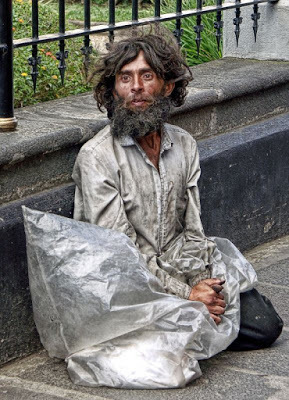
THE OTHER SIDE OF THE FESTIVE SEASON
G'day folks,
Christmas Eve is a good time to be reminded of those who do it tough, for whatever reason. I live in the State of Victoria, one of six states and two territories that make up Australia. Melbourne is the capital of Victoria, whose population is currently 5.791 million people, and Australia's population is 24.5 million people. However, we have an increasing number of homeless people; those who will not care if it is Christmas. No, they will be too busy surviving. So, notwithstanding all the media about refugees across the globe, we have our own share of displaced people right here on our doorstep, and the figures for this state, my State, are a disgrace in 2016. Here are some facts ...

A recent survey in 2004 suggests over 4,000 people in Melbourne are physically homeless.
Homelessness is not a choice that people make, it happens. We as a community have a social, moral and ethical responsibility to care and foster its vulnerable members.
In a culture that endears itself and measures successful people with being good, law abiding, kind, generous, in order to succeed ; what messages are we sending to those individuals who also possess these same qualities, who find themselves marginalised in ever increasing numbers. So it does beg the questions; how just is our society? Is it indeed fair and equitable?
Homelessness is a universal journey, and is not necessarily by definition just about shelter, it is an intrinsic state of unrest.

Homelessness is defined as when a person is left without a conventional home and lacks the economic and social support that a home normally affords. He/she is often cut off from the support of relatives and friends, and has few independent resources. Often the person has no immediate means and in some cases, little prospect of independence even more so if you have a mental illness.
It’s almost 20 years since the Richmond Report and the community sector is yet to see the recourses they were promised. Since the de-institutionlisation of mental health services, community care is focused on home care; however a reliance on this is clearly deficient considering that a high percentage of the homeless also have a mental illness.
The numbers of homeless people in Victoria has increased by 13.8 percent from 17,840 in 1996 to 20,305 people in 2001.
A separate survey was conducted as part of the Counting the Homeless 2001 report examining marginal residents or people likely to be homeless living in caravan parks.
Any analysis of these homelessness figures should consider this report in combination with the general figures.
If the marginal resident in caravan park figures are added to the numbers of homeless people, the total for Australia is 122,768 people. The total figure for Victoria is 23,712 people.
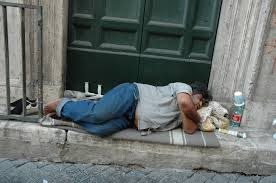
What is Homelessness?
Homelessness in Australia is often referred to as a three layered situation.
Primary homelessness
Is the term applied to those without conventional accommodation – this could mean sleeping rough or living in a car.
Secondary homelessness
Is when people move frequently from one place to another, such as with couch-surfing or staying in a refuge.
Tertiary homelessness
Is when people have accommodation but it is considered unstable, such as living in a caravan park or rooming house
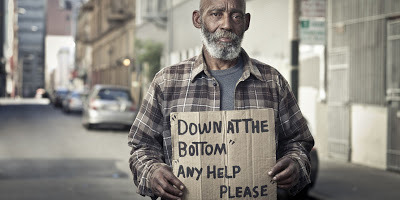
How many people are homeless in Victoria?
There are over 22,000 people that are homeless or marginally housed in Victoria, and of these, about half are young people under 25 years of age. In 2011, 68,500 women, men and children accessed homelessness services in Victoria. Almost 60% of homelessness service users are aged under 25.

What are the main causes of youth homelessness?
There are many reasons why young people experience homelessness, or become at risk of homelessness.
These reasons can include:• Family or relationship breakdown• Family or partner violence• Abuse and/or neglect• Family homelessness• Unemployment and poverty• Lack of affordable housing
In December 2011, over 18,000 young people contacted homelessness support agencies like Frontyard for assistance. Statistics show that the main reason for these young people experiencing homelessness was housing crisis (18%), followed by relationship or family breakdown (17%) and domestic and family violence (15%).
Lack of sufficient income• Lack of support in leaving state care• Transitioning to adult employment and education services• Mental health issues• Alcohol or other drug issues

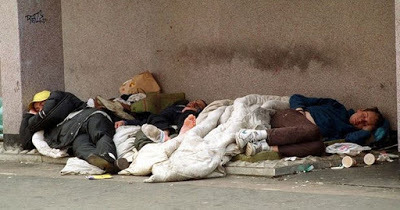
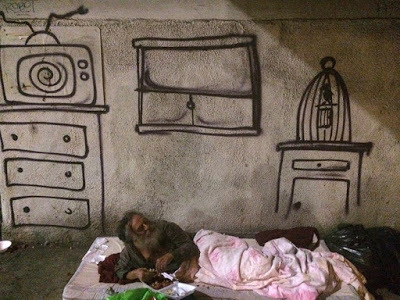
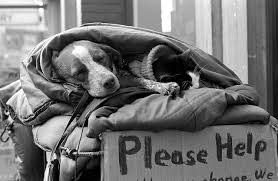
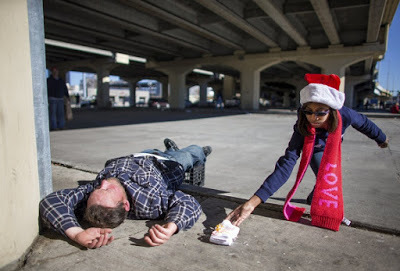
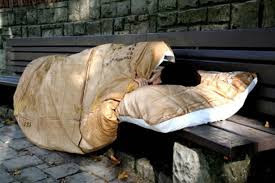
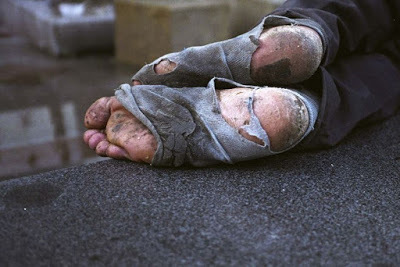
Now, here is an anecdote of one of my experiences with homeless people.
Normally, I spent Christmas day at my folk’s house. It was always a great day, and one of the few days when I caught up with the rest of my family. One year, I decided to forsake my Christmas festivities and offer my time to homeless men at Ozanam House, a Catholic institution that cared for homeless men. I turned up prepared to day anything and was gob smacked to find so few volunteers. Other than me, another seven people had also offered their time.
Prior to dinner being served to approximately 150 men, I heard a loud noise and saw one particular inmate growling loudly at another guy. Spontaneously, I stepped into the fray and intervened. The guy who was growling looked mean and angry. His opponent looked similar. They were arguing over the seating arrangements. However, because it was Christmas Day, I spoke sternly to both of them, reminding them that we were volunteers and that it was a day to be merry and cheerful. I then suggested that they shake hands, sit down and enjoy a wonderful meal. Both men, who looked like hardened homeless men, glanced at me, shook hands and sat down.
For the next three hours we worked our bums off, serving beautiful meals to the homeless men. It was a hectic time but very rewarding. Before I left, the angry, grouchy guy approached me and shook my hand. ‘Merry Christmas,’ he said. ‘Thanks, mate.’ ‘You’re welcome,’ I said. I finally left Ozanam House late in the afternoon and drove home feeling very hollow. I was certainly glad I’d offered my time, but knowing there were so many homeless people in my country made me wonder why we called it the ‘Lucky Country.’

Clancy's comment: Mm ... That is just a snapshot of a wider problem in this country, and the world for that matter. I can think of lots of money that has been wasted by our government in recent times; money that could have been used to provide affordable housing. One example comes to mind. It is one that still leaves me breathless. Twenty-five senior public servants from our capital, Canberra, went to Paris to discuss ... Wait for it ... HOW TO SAVE MONEY! Yep, you heard it right. Why not stay at an Australian city and spread the money within our own economy? Nope, they chose Paris, and that trip cost us $250,000.
Gasp! And, I hope those mongrels have been severely reprimanded and demoted. Then again, I guess our politicians have been their role-models, so what can we expect?
Anyway, spare a thought for those who are doing it tough this Christmas, especially the women and kids fleeing from domestic violence.
Me? I will be helping out at a community Christmas dinner that we have every year for those who have no one to share Christmas with. There should be about 100 - 150 people there. Should be fun.
I'm ... as always ...

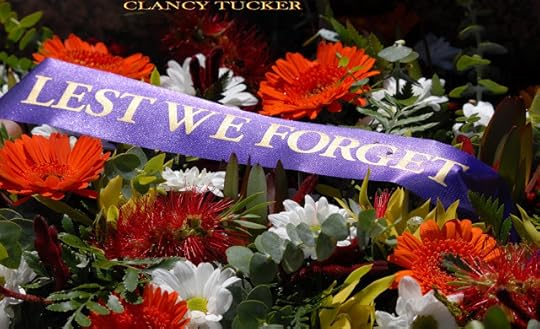
Published on December 23, 2016 12:02
December 22, 2016
23 December 2016 - MORE DIFFICULT WORDS

MORE DIFFICULT WORDS
G'day folks,
Here are some more tricky words, courtesy of Vocabulary.com. Want further information? Right click on the word.
adverse
in an opposing direction
advocate
a person who pleads for a person, cause, or idea
affluent
having an abundant supply of money or possessions of value
aggrandize
add details to
alacrity
liveliness and eagerness
alias
a name that has been assumed temporarily
ambivalent
uncertain or unable to decide about what course to follow
amenable
disposed or willing to comply
amorphous
having no definite form or distinct shape
anachronistic
chronologically misplaced
anathema
a formal ecclesiastical curse accompanied by excommunication
annex
attach to
antediluvian
of or relating to the period before the biblical flood
antiseptic
thoroughly clean and free of disease-causing organisms
apathetic
showing little or no emotion or animation
antithesis
exact opposite
apocryphal
being of questionable authenticity
approbation
official approval

Clancy's comment: I hope these have been helpful.
I'm ...

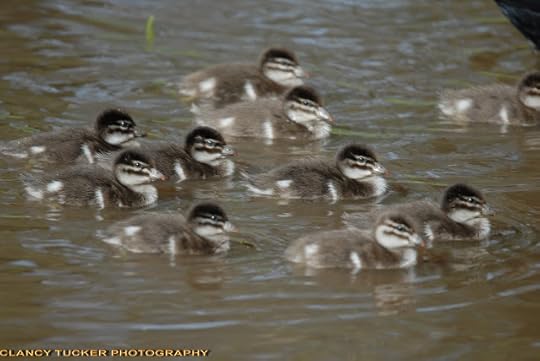
Published on December 22, 2016 12:35
December 21, 2016
22 December 2016 - HADRIAN'S WALL

HADRIAN'S WALL
G'day folks,
Hadrian's Wall, also called the Roman Wall, Picts' Wall, or Vallum Hadriani in Latin. It was a defensive fortification in the Roman province of Britannia, begun in 122 AD in the reign of the emperor Hadrian.
Built on the orders of the Roman Emperor Hadrian and located in Great Britain, Hadrian’s Wall was a defensive fortification that marked the northwest frontier of the Roman Empire for three centuries. The wall measured 73 miles in length and stretched from coast to coast across present-day northern England, between Wallsend in the east to Bowness-on-Solway in the west. Construction likely started around A.D. 122, after Hadrian visited the Roman province then known as Britannia, and it’s thought to have taken an army of 15,000 men at least six years to complete it. The majority of the wall was made from stone, although some portions were fabricated from turf.

Small forts called milecastles were established at every Roman mile (the equivalent of .91 modern miles) along the wall, and two observation turrets were placed between each milecastle. Additionally, there were more than a dozen larger forts along the wall’s length where soldiers were stationed. An enormous earthwork consisting of a ditch flanked by parallel mounds, and now referred to as the Vallum, was created just south of the wall.
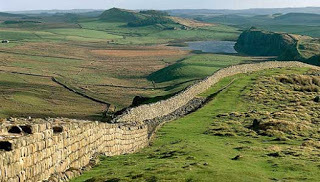
Hadrian served as emperor from 117 until his death in 138. Afterward, the new emperor, Antoninus Pius, erected a turf wall to the north of Hadrian’s Wall, in present-day Scotland. However, the so-called Antonine Wall, which also had a number of forts along its length, was deserted in the 160s and the Romans reoccupied Hadrian’s Wall. The forts along the wall likely were occupied until the end of Roman rule in Britain, in the early 5th century.

In the ensuing centuries, stones from Hadrian’s Wall were removed to build homes and roads; however, portions of the wall still survive. Today, a long-distance walking path follows the wall’s route across northern England.

Clancy's comment: Back then, people loved building walls. I guess they were the original landscapers?
I'm ...


Published on December 21, 2016 11:43
December 20, 2016
21 December 2016 - JAMES COTTON - BLUES MASTER
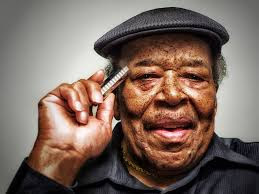
JAMES COTTON- BLUES MASTER -
G'day folks,
Welcome to the life of a blues master. James Henry Cotton is an American blues harmonica player, singer and songwriter, who has performed and recorded with many of the great blues artists of his time and with his own band.
James Cotton is one of the very last of a dying breed—the Delta Bluesman. Of the genres represented on this list, perhaps none is so ravaged by time. We have precious few living links to the world they inhabited. That James Cotton is still alive is a fact to be cherished. Born in Tunica, Mississippi, Cotton’s first exposure to music was through his mother Hattie’s harmonica playing. Though she was not particularly adept at the instrument, her playing fascinated James. He received his first harp for Christmas one year and quickly surpassed his first mentor.

Like many of the black families living in the segregated Delta, Cotton’s family worked as sharecroppers. Because he was too young to cut cotton, he sat in the shade and played music for his parents and siblings as they worked the fields. He took his first great leap as a musician when he first heard Sonny Boy Williamson on the radio. The legendary Williamson had gained widespread fame through his King Biscuit Time broadcasts and Cotton became one of his most avid admirers.
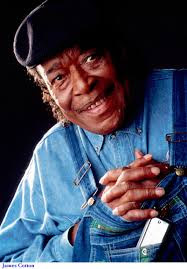
At the age of nine, Cotton suddenly lost both of his parents. His uncle, showing a remarkable prescience, took the boy to nearby Helena, Arkansas, to meet his idol. Williamson informally adopted the recently orphaned Cotton and made him his opening act. Cotton was far too young to enter the juke joints they played, but earned his tips by blowing harmonica on the front stoops.
When Williamson’s band unraveled, Cotton journeyed to Memphis and earned his way through his teenage years as a street performer and shoeshiner. One night, Cotton caught wind of a Howlin’ Wolf performance in town. He rushed over with his harp, introduced himself, and before the age of 15, found himself on tour with another blues legend.
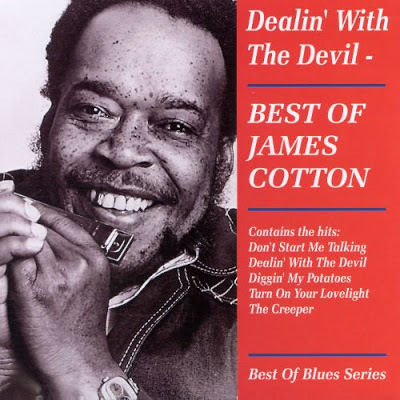
In 1954, when Cotton joined yet a third blues legend—Muddy Waters—he began an association that would last more than a decade, during which he would help cut some of Waters’s most iconic recordings. In the ‘60s, Cotton struck out on his own with the James Cotton Band, exploring similar psychedelic blues terrain as artists like Jimi Hendrix and Canned Heat. He doubled down on this transition by opening for Janis Joplin in 1967.
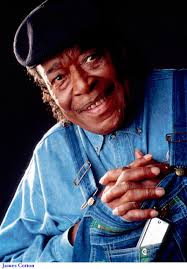
Over the course of the next several decades, James Cotton accompanied a mighty list of musicians, live and in studio, including Santana, B.B. King, the Grateful Dead, and Taj Mahal. Cotton was inducted into the Blues Hall of Fame in 2006 and remains a flesh-and-blood connection to the ghosts of blues lore. James Cotton is the greatest living blues harpist, a title he defends by performing live even to this day.

Clancy's comment: Another very talented man, and still performing. Man, you have to love that sort of passion.
I'm ...

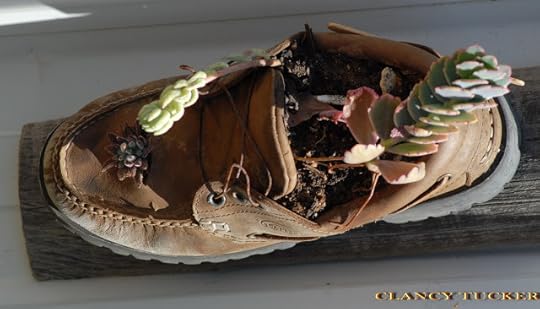
Published on December 20, 2016 12:10
December 19, 2016
20 December 2016 - GREAT ONE-LINERS

GREAT ONE-LINERS
G'day folks,
Here are some interesting one-liners to make you think and smile.
· How do you get off a non-stop flight?
· How do you write zero in Roman numerals?
· How many weeks are there in a light year?
· If Barbie's so popular, why do you have to buy all her friends?
· If blind people wear dark glasses, why don't deaf people wear earmuffs?
· If space is a vacuum, who changes the bags?
· If tin whistles are made out of tin, what do they make fog horns out of?
· If you shouldn't drink and drive, why do bars have parking lots?
· If you jog backwards, will you gain weight?
· Why do the signs that say "Slow Children" have a picture of a running child?
· Why do they call it "chili" if it's hot?
· Why is the time of day with the slowest traffic called rush hour?
· One tequila, two tequila, three tequila, floor.
· The main reason Santa is so jolly is because he knows where all the bad girls live.
· I went to a bookstore and asked the saleswoman, "Where's the self-help section?" She said if she told me, it would defeat the purpose.

Clancy's comment: Well, did you smile?
I'm ...


Published on December 19, 2016 12:41



